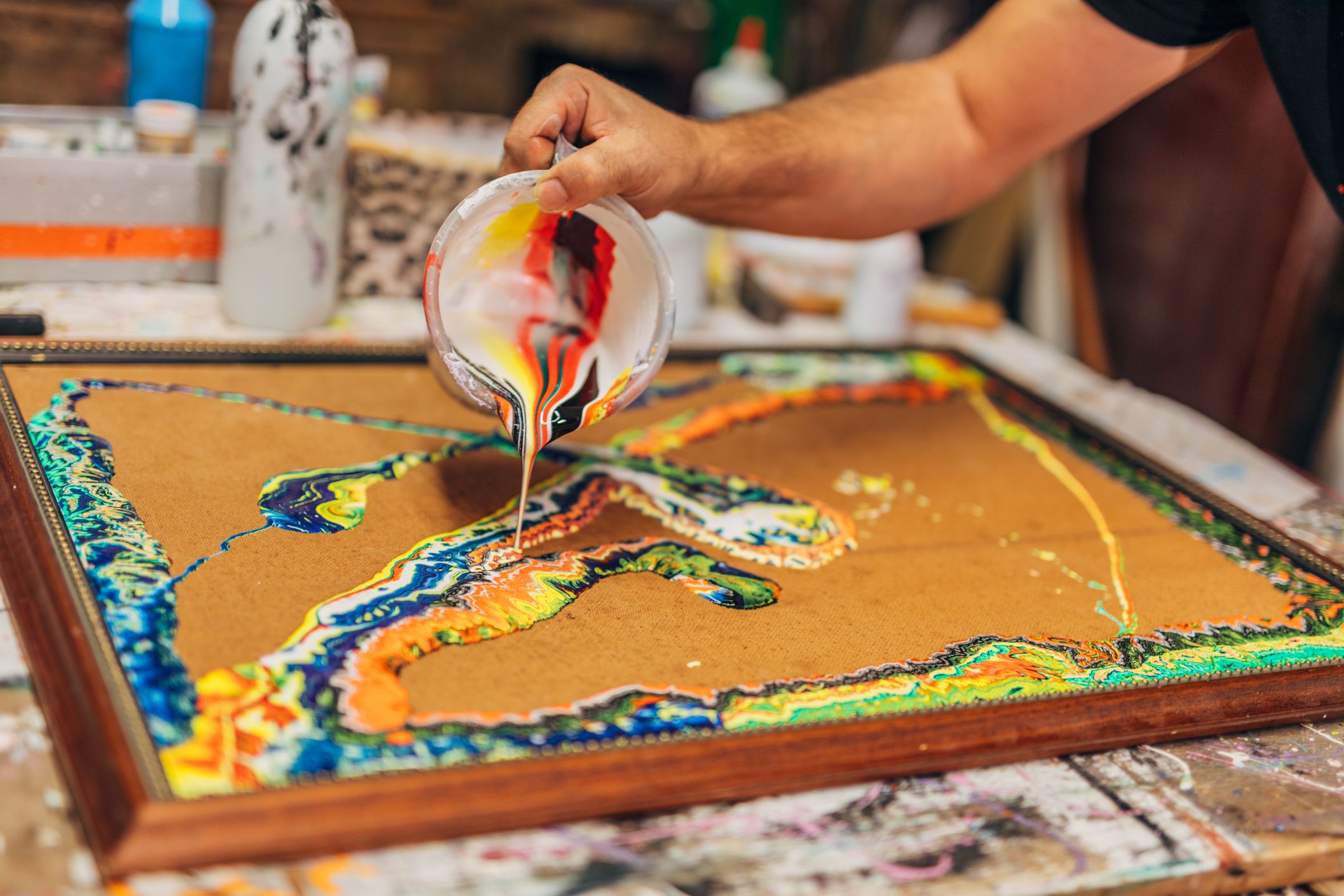
When I initially began my acrylic pouring excursion, I was astounded by what number of various ways individuals arranged their liquid acrylic paints? Certain individuals had an entire framework with various items and various proportions for each. The proposals were generally not off-base, as such, however they sure didn't check out for a novice.
A simple method for planning paint for an acrylic pour is to utilize one-section acrylic paint and blend it in with two pieces of Elmer's Paste All or Flood Floetrol. Add water a couple of drops all at once until you get a consistency where when raised with a blending stick to 1" off the surface the paint dribbles it off and makes a hill and vanishes soon.
As may be obvious, blending acrylic pour paint doesn't need to be confounded. We'll go over all that you really want to know including why we utilize more liquid paints, what textures are utilized in which strategies, normal missteps to stay away from while blending liquid acrylic paints, and the sky is the limit from there.
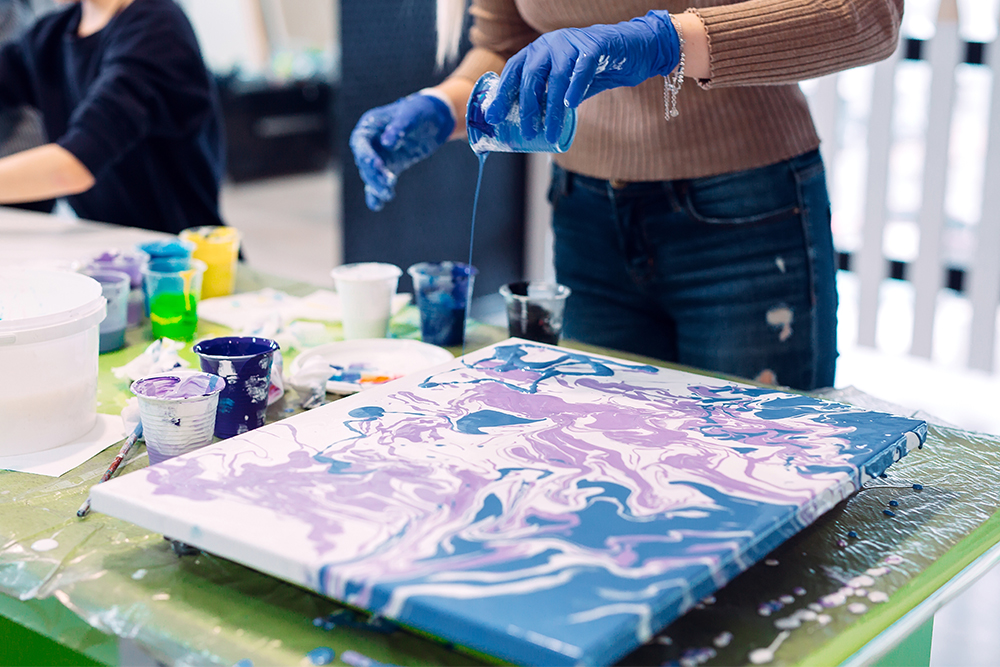
Acrylic pouring is a workmanship style where non-thick or runny acrylic paints are consolidated and controlled on a composition surface. The consistency of the paints takes into consideration the paints to naturally blend and merge making a type of conceptual craftsmanship.
There are a wide range of strategies to use with acrylic paint pouring including these essential and high level methods.
While there are a few brands to do offer read-to-pour acrylic paints like Arteza and Craftsman's Space, many paints should be blended and ready with water or other pouring mediums to get a consistency liked by numerous specialists.
The consistency of your completed creation is ostensibly the main piece of planning paint for liquid craftsmanship. The right consistency has the most effect of how the paint will respond and it one of a handful of the things you can truly control with acrylic paint pouring.
At the point when you are initially beginning, we prescribe attempting to accomplish a similar consistency of paint for all your first pours. This will give you an ideal beginning stage to understanding what changing the consistency means for the result of your craftsmanship
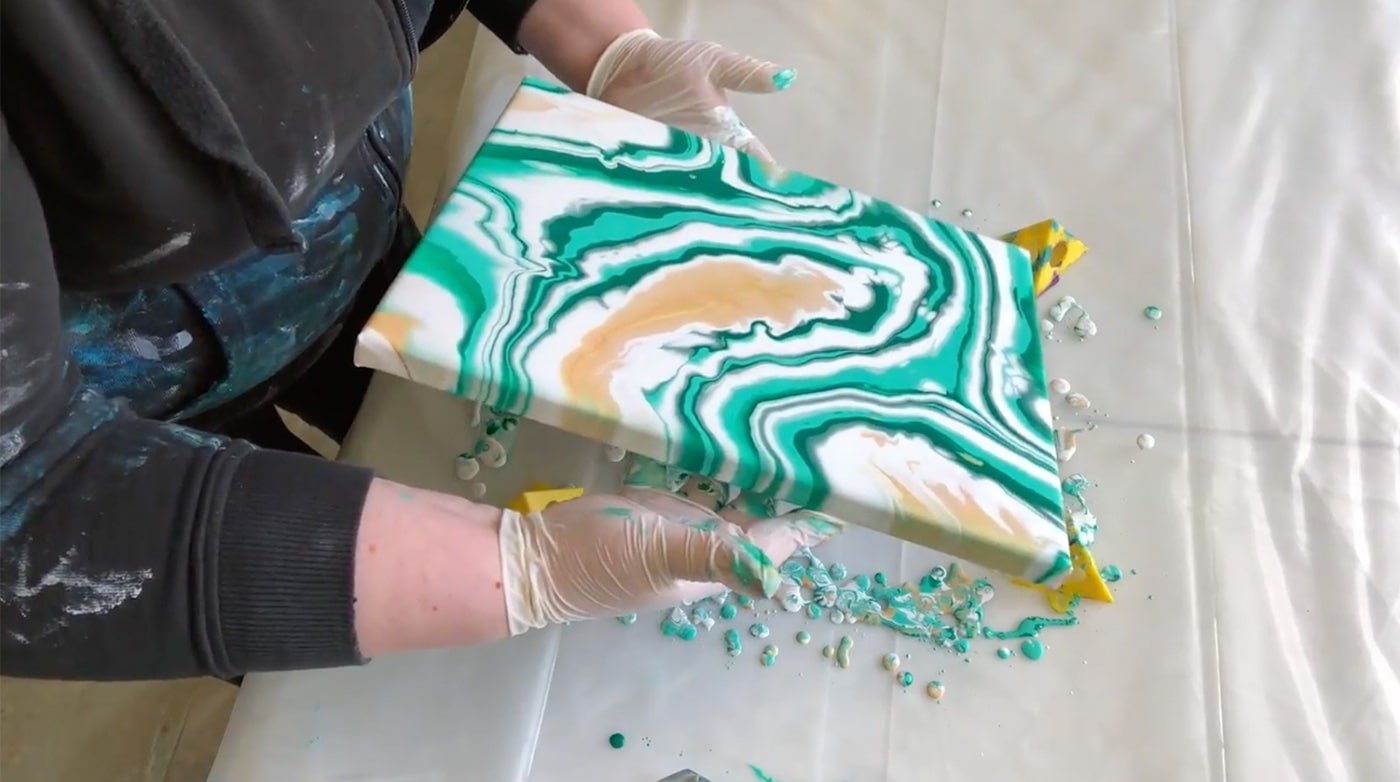
There are a couple of ways of estimating the consistency of your liquid acrylic paint. We'll go over the two we believe are the simplest to follow. After a ton of paint blending, numerous craftsmen say they figure out how to feel the right consistency as well as utilizing these sorts of techniques.
The Trickle Technique
The most widely recognized one that we have seen is to plunge your paint stick into the paint and haul it out about an inch over the remainder of the paint in the holder. Too high and the paint will sink because of the expanded level and too low will make the paint make a stalagmite/tapered rock straightforwardly from the stick.
Allow the paint to trickle once more into the compartment and watch how it collaborates with the top layer of paint. We believe the paint should trickle off the mixing stick and make a slight mount and afterward promptly vanish. That hill shouldn't keep going for over a little while.
Assuming the paint is thicker the mount will make various mounts on top of itself, similar to a frozen custard, and afterward step by step vanish in 3 or 4 seconds.
On the off chance that the paint is too slender your paint gushing off the mix stick will seem as though it sinks under paint or it will promptly incorporate into the surface without making a hill.
The Drip Method
This strategy resembles the dribble technique in that you need to plunge your blending stick and haul it out of the paint to a level of around one inch too.
With this technique, you need to wind around an example like a work or a snake over the outer layer of the paint. Make certain to stay away from the paint surface.
The snake/worm example should endure somewhere around two seconds before you can't see any recognizably raised segments.
Assuming that the paint is too thick it will be 4 or 5 seconds before it vanishes. Excessively slim and it will very quickly vanish.
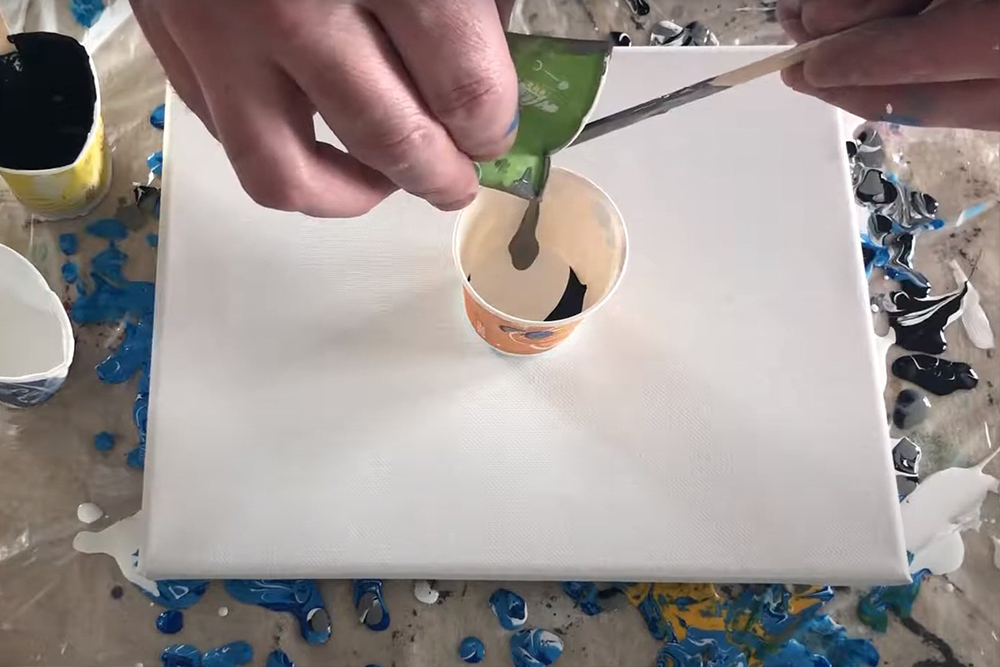
There is a plenty of pouring mediums that can be utilized with acrylic paint pouring. A pouring medium is basically a fluid added substance that you use to stretch out the paint to assist with changing its consistency without forfeiting its holding (think dried plastic) characteristics.
With the end goal of this article, we will zero in on three of the least expensive and simplest pouring mediums to get: Elmer's Paste All, Flood Floetrol, and water.
Elmer's Paste Everything is only that, stick. The paste is white in fluid structure yet dries clear. It likewise has the nature of being extremely tacky and solid when dried. This matched with the way that somewhat simple to purchase and it for the most part economical is the very nature of a pouring medium that you ought to be searching for as a fledgling paint pourer.
Extra data about involving Paste All in our blog entry Might You at any point Involve PVA Paste for Acrylic Pouring?
Flood Floetrol can be found in most home improvement shops in the paint office. This item is mean to be utilized with paint to assist with eliminating brush marks and to disperse the paint somewhat for use in a paint sprayer. This additionally has covers like the emulsions utilized with acrylic paints and will dry hard areas of strength for and.
At long last, water can be utilized as the medium to assist with diminishing the paint the consistency that we are searching for. Try not to utilize more than around 30% water to paint proportion or probably you will weaken the paint such a lot of that it loses its solidarity and it will strip or twist when dried.
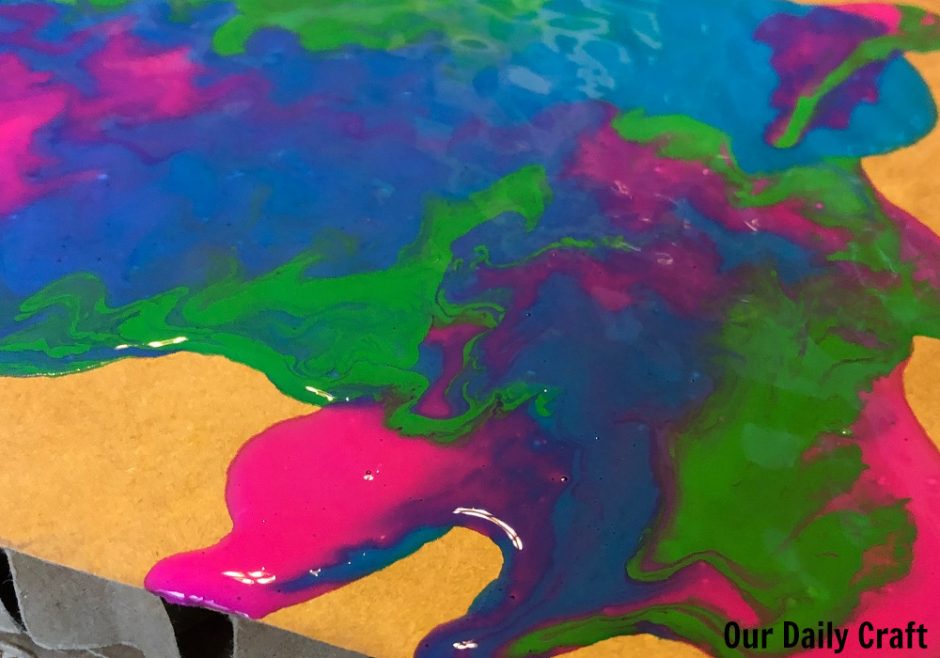
The following are a couple of the most widely recognized pour paint recipes we see with acrylic paint pourers today. Peruse the following area to figure out how these proportions might change in light of the "body" or thickness of the acrylic paint utilized.
Stick All
Blend 60% Paste All to 40% water. Once complete blended, utilize 2 pieces of this pouring medium to one-section delicate body paint (most cylinder paints are delicate body). Generally speaking, no additional water is required. In the event that it is, just add a couple of drops all at once, blend, and yet again really look at consistency.
Floetrol
Blend two sections Floetrol to one-section paint. Once completely blended, check the consistency and afterward add a couple of drops all at once and yet again blend until you get the ideal consistency.
Water
Gradually add a couple of drops of water per ounce of paint and blend. Continue to rehash until the ideal consistency is accomplished.
Paint Proportions for Various Body Paints (Weighty, Delicate, Liquid, Art)
Acrylic paint comes in four primary sorts: weighty body, delicate body, liquid acrylic, and specialty paint. Every single one of the paint types could require a slight change to the suggested pouring recipes above.
Delicate Body Acrylics
Most paints that come in metal or plastic cylinders or bigger compartments will be delicate body acrylics. Now and again these are alluded to as medium body acrylics. These appear as though warm honey went extracting it from the cylinder or scooping it out of the holder. The paint proportions above will function admirably with medium body acrylics.
Weighty Body Acrylics
Weighty body paints are more similar to cold honey or toothpaste. They hold their shape when removed from the compartment and don't straighten out a lot. These paints generally have a higher color load (how much shade per ounce of paint). While utilizing weighty body acrylics, you presumably need to up your proportion to more like 3:1, 4:1, or more with Paste All and Floetrol.
Liquid Acrylics
Liquid acrylics are extraordinarily made to be runnier than delicate or weighty body acrylics. Tragically for us, there are two principal kinds of liquid acrylics. There are those that are exceptionally pigmented from great brands like Liquitex and Brilliant, and there are those spending plan liquid acrylics that are delicate body paints with more water added to them.
The more costly liquid acrylics can be blended in with an exceptionally high pouring medium to paint proportion, by and large, 4:1 or more, while the more affordable liquid acrylics, similar to Craftsman's Space, ought to keep up with the 2:1 proportion.
Craft Paint
craft paint is for the most part a less expensive variant of acrylic paint that isn't exceptionally pigmented by any means. We prescribe slicing your proportions to 1:1 and with the paste combination, increasing the paste to water proportion to 70% paste to 30% water or ever 75% paste to 25% water.
On the off chance that you truly do keep a higher medium to paint proportion your paints will be significantly less lively and will appear to be extremely dull contrasted with different varieties arranged with the suggested proportions.
Searching for more data about acrylic paint brands? Learn about the exploration we did to find the Best Paint for Acrylic Pouring?

You will see that numerous specialists decide to involve sifted or refined water in their acrylic pours. The primary justification for this is the chopped down the change organisms get acquainted with the artwork.
Shape and buildup can frame on the off chance that paints dry gradually or where there is bunches of dampness in the air. Any blended paint that you store for later use will likewise will generally develop undesirable things all the more rapidly with water from the spigot.
We don't suggest you store any blended paint for in excess of half a month, in any event, when kept in impermeable compartments.
Get more insights regarding things that can make acrylic paint turn sour here.
Measure Your Ingredients
The last guidance we need to give you while blending your pourable acrylic paint is to gauge your proportions, essentially for the initial not many works of art that you do.
Estimating your paint will guarantee that you are continuously getting a similar consistency of paint and will be one less factor you really want to stress over while attempting to decide why one composition appeared to be so unique from another work of art.
With experience, you could reach the place where you can blend your paints by feel, however until that time estimating is your companion.